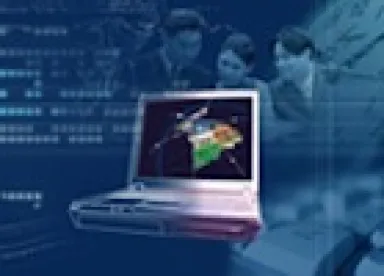On June 19, 2014, the Supreme Court issued its decision in Alice Corp. Pty. Ltd. v. CLS Bank Int’l1 regarding the standard for patent eligibility under 35 U.S.C. § 101. In a unanimous decision, the Court held Alice’s patent claims patent-ineligible, but did not articulate any new or more specific standards for doing so. Rather, the Court was content to apply the body of case law on § 101 it had developed over the past several years to the specific facts in the Alicecase. Those hoping for a new, less ambiguous standard will have to wait.
Factual and Procedural Background
Alice Corporation owns several patents directed to the use of a computerized trading platform for conducting financial transactions in which a third-party intermediary settles obligations between a first and a second party so as to eliminate “settlement” risk – the risk that only one of the two parties to a transaction will pay its obligation.2 The patented method involved the use of “shadow” credit and debit records that mirror the balances in the parties’ real-world bank accounts, updates the “shadow” records in real-time, and instructs the first and second parties’ financial institutions to carry out the “permitted” transactions in accordance with the updated shadow records at the end of the day. The patents-in-suit included method claims for this method of eliminating settlement risk; system claims in which a computer system is configured to carry out the above method; and “computer-readable medium” claims in which a computer-readable medium contains program code for carrying out the method.3
In 2007, CLS Bank filed suit against Alice, seeking a declaratory judgment that the patents-in-suit were invalid, unenforceable, or not infringed; Alice counterclaimed, alleging patent infringement. On cross-motions for summary judgment, the District Court held that the claims at issue were ineligible under § 101, because they were all directed to the abstract idea of “employing a neutral intermediary to facilitate simultaneous exchange of obligations in order to minimize risk.”4 On appeal, a panel of the Federal Circuit reversed, holding that the claims were directed to statutory subject matter because it was not “manifestly evident” that Alice’s patent claims were directed to an abstract idea.5 But, on en banc rehearing, the panel’s decision was vacated in a per curiam opinion. A majority of the Federal Circuit affirmed the District Court’s judgment that Alice’s method and computer-readable medium claims were patent-ineligible, and affirmed by an equally divided court the judgment that the system claims were patent-ineligible.6
The en banc decision in Alice spawned 170 pages of concurring and dissenting opinions, and highlighted the deep fracture among Federal Circuit judges on how to determine subject matter eligibility under § 101. Indeed, in an October 2013 speech following Alice’s petition forcertiorari, former Chief Judge Randall Rader described the Alice decision’s failure to provide concrete guidance on patent-eligibility as the “greatest failure in my judicial career.”7
The Supreme Court Holds Alice’s Patents Ineligible
In determining the eligibility of Alice’s patents, the Supreme Court applied the two-part test it articulated in Mayo Collaborative Servs. v. Prometheus Labs., Inc. – first, whether the claims at issue are directed to a law of nature, natural phenomena, or abstract idea; and second, whether there is an “inventive concept” sufficient to transform the nature of the claim into a patent-eligible application – i.e., an element or combination of elements “sufficient to ensure that the patent in practice amounts to significantly more than a patent upon the [ineligible concept] itself.”8
With respect to Alice’s patents, the Court held that, first, the claims were “drawn to the abstract idea of intermediated settlement,” rejecting the plaintiff’s arguments that the abstract-ideas category was “confined to preexisting, fundamental truths that exist in principle apart from any human action.”9 Second, the Court held that generic computer implementation does not transform an abstract idea into a patentable invention,10 and that Alice’s method claims, whether the elements thereof were considered separately or as an ordered combination, did not do any more than recite such a generic computer implementation.11 Finally, the Court held that Alice’s system and media claims were similarly patent-ineligible because they recited “specific hardware” that was “purely functional and generic,” or, in other words, “no different from the method claims in substance.”12 Accordingly, the Court held all of Alice’s claims at issue – method, system, and media claims – ineligible under § 101.
Potential Impact on Patent Litigation
The Alice decision was helpful in resolving a few relatively minor questions on patent-eligibility. First, it is now clear that “system” and “computer-readable medium” claims will undergo meaningful § 101 scrutiny, just as method claims are. The holding in this regard is consistent with the Federal Circuit’s prior decision in Cybersource Corp. v. Retail Decisions, Inc.,13 a case handled by Greenberg Traurig, which resulted in a holding of invalidity of both method and computer-readable medium claims under § 101. Second, Alice leaves no doubt that the two-step framework the Court set forth in Mayo is to be applied to all questions of patent eligibility, including in software patents.
But, Alice is as notable for what the Supreme Court did not do as for what it did. Alice sought to have the Court determine whether all claims to computer-implemented inventions were patent-eligible. The Court did not decide this broad question,14 only deciding the narrower question of whether Alice’s computer-implemented invention was patent-eligible. Moreover, the Court declined to further clarify how the Mayo test is to be applied,15 leaving some room for creative argument and further development of the test in the lower courts. In short, whether a patent is directed to statutory subject matter is a question that will likely continue to be heavily litigated.
1 573 U.S. ___ (2014) (“Alice”).
2 The patents-in-suit were U.S. Patent Nos. 5,970,479; 6,912,510; 7,149,720; and 7,725,375.
3 Alice, slip op. at 2-3.
4 CLS Bank Int’l v. Alice Corp. Pty. Ltd., 768 F. Supp. 2d 221, 252 (D.D.C. 2011).
5 CLS Bank Int’l v. Alice Corp. Pty. Ltd., 685 F.3d 1341, 1352, 1356 (Fed. Cir. 2012).
6 CLS Bank Int’l v. Alice Corp. Pty. Ltd., 717 F.3d 1269, 1273 (Fed. Cir. 2013).
7 See, e.g., Brian Mahoney, Software Patent Ruling a Major Judicial Failure, Rader Says, Law360, Oct. 25, 2013.
8 Alice, slip op. at 7 (quoting Mayo Collaborative Servs. v. Prometheus Labs., Inc., 566 U.S. ___ (2012)).
9 Id. at 7, 10 (internal quotations and alterations omitted).
10 Id. at 10-14.
11 Id. at 14-16.
12 Id. at 16-17.
13 654 F.3d 1366 (Fed. Cir. 2011).
14 In a concurring opinion, Justice Sotomayor, joined by Justices Ginsburg and Breyer, wrote that in her view, a “claim that merely described a method of doing business does not qualify as a ‘process’ under § 101.”
15 See, e.g., Alice, slip op. at 10 (“In any event, we need not labor to delimit the precise contours of the ‘abstract ideas’ category in this case. It is enough to recognize that there is no meaningful distinction between the concept of risk hedging in Bilski [v. Kappos, 561 U.S. 593 (2010)] and the concept of intermediated settlement at issue here.”).




 />i
/>i

